Most residents are aware that Native Americans were once in this area. But, do you know where they lived and, more importantly, Western Springs was Indian country? Well yes, sort of.
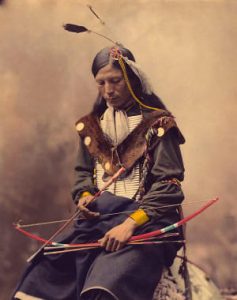
POTAWATOMI INDIAN
While there’s no evidence of cowboys ever being in the immediate area, there’s no question that Pottawatomie Indians once hunted and traveled throughout what is now Chicago and its suburbs. And, in the early 1800s, the area that is now Western Springs was located on an Indian trail (now Ogden Avenue), connecting important fur trading posts located at Naperville, Lyons, and Fort Dearborn, now Chicago. But, the Pottawatomie usually didn’t establish permanent towns or villages.
They did have seasonal campgrounds. These were often located near waterways to accommodate their use of canoes. Such campgrounds are known to have existed near the Graue Mill on Salt Creek, along Flag Creek near Forest Hills, and in Willow Springs. It is also believed that, between 1770 and 1800, the mineral spring, located in what is now Spring Rock Park, was a gathering place for some of these nomadic people.
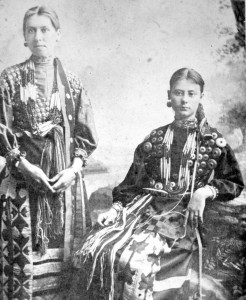
Potawattomie females
Frequent seasonal moves (in pursuit of game) were a way of life for the Native Americans who lived in this region. Hunting and fishing occupied a great deal of their existence, requiring long hunting trips. Often, spouses and children would accompany the hunters, although elders and some females would usually stay behind to tend the corn and other crops they raised.
Despite this, some Pottawatomie were also warriors. And, in 1812, a band of 100 or so was responsible for forcing the evacuation of Fort Dearborn and subsequently attacking the retreating troops and families. This has been called, by some, the “Fort Dearborn Massacre”. While the destroyed fort was re-built in 1816, this incident convinced the public and the government that all Indians had to be removed from the territory, far away from the settlers. As a result, the government began taking steps to persuade various tribes to relocate.
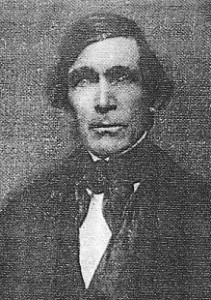
Joseph Vial
The Pottawatomie were the last native tribe to leave Illinois, their main exodus taking place around 1835. This was the result of a treaty signed in 1833. While some accounts called it a scandalously bad deal for the Native Americans, the Pottawatomie exchanged their holdings for new land west of the Mississippi, as well as goods valued at $30,000 (worth considerably more in 2013 dollars).
As a result of the treaty, the vast majority of Native Americans began moving west from the Chicago area, just as new settlers were arriving. One of those settlers was Joseph Vial, who had moved from New York and purchased 80 acres of land in what is now the Timber Trails subdivision.
In one written account, Vial noted that the Pottawatomie were still in the area at the time he purchased his land and that they “… were never troublesome after we came. I remember old Shabbona, head chief of the Pottawatomie. He was about the noblest specimen I ever saw. It was through his (Shabbona’s) efforts that the tribe remained quiet during the Black Hawk War (1832)”.
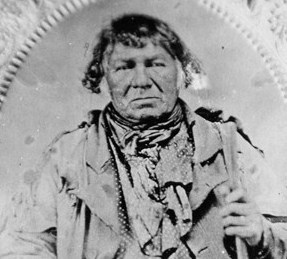
Shabbona
The migration west did not occur all at once. Rather, individual bands moved westward at different intervals. On September 21, 1835, a group of 1,000 Indians began their westward journey via wagon train from Riverside. Shortly after this, the last band, comprising about 70 Native Americans, left Chicago.
After the first day’s travel, this group stopped at the Vial farm located at Plainfield and Wolf Road. Accounts from that era indicate that they were welcomed and “treated kindly” by the white settlers, camping along the banks of the Flag Creek. They then resumed their westward trip. In 1930, a plaque was placed near Plainfield Road to commemorate this “last encampment”. Look for it the next time you pass the corner of Wolf and Plainfield Road.
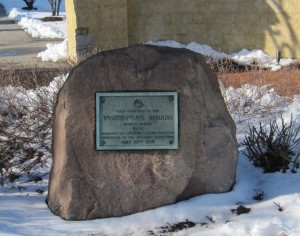 During the past 125 years, many residents of Western Springs and adjoining towns have reported finding Indian artifacts. Such items were also found in the Bemis Woods when the Forest Preserve Nursery was built, just north of Howard and Ogden Avenue. These items have included arrowheads, stone hammers, spears, and mortars and pestles for grinding corn.
During the past 125 years, many residents of Western Springs and adjoining towns have reported finding Indian artifacts. Such items were also found in the Bemis Woods when the Forest Preserve Nursery was built, just north of Howard and Ogden Avenue. These items have included arrowheads, stone hammers, spears, and mortars and pestles for grinding corn.
If you would like to see some of these items, stop by the Western Springs Historical Society Museum located in the historic Water Tower. We’re open every Saturday, 10 a.m. to Noon, and admission is free.
